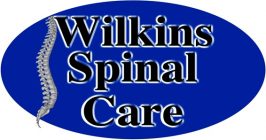REVISITING THE AUTONOMIC NERVOUS SYSTEM
Early last year, we talked a lot about neuropathy, nerve degeneration and the three different divisions of the nervous system. Neuropathy primarily affects the Peripheral Nervous System (PNS) and the Autonomic Nervous System (ANS). Last year, we talked a lot about the PNS and little about the ANS. This week, we will focus on the ANS, discuss how it’s affected, and explain what we can do to help.
Nervous System Recap
Remember, without the nervous system, we cannot survive. As a quick refresher, let’s briefly discuss the two other divisions of the nervous system: the Central Nervous System and the Peripheral Nervous System.
The Central Nervous System (CNS)
The CNS is the powerhouse of the nervous system. It consists of both the brain and the spinal cord. The brain sends and receives signals to and from the spinal cord allowing human movement, sensation, reflexes, and entire body function. Once signals leave the spinal cord and go out to the body, we are now in the Peripheral Nervous System.
The Peripheral Nervous System (PNS)
The PNS begins once we exit the spinal cord and messages are sent out to the arms and legs for full functioning. The PNS consists of spinal nerves and cranial nerves. We have 12 cranial nerves that have various functions such as sight, smell, hearing, touch and movement of the neck and face. Spinal nerves consist of two different nerves: motor and sensory. Motor nerves allow for human movement while sensory nerves allow for human sensation.
The Autonomic Nervous System
The ANS controls our internal organs such as the lungs and heart to allow for functions such as breathing, blood circulation, digestion, urination, etc. The ANS has two different responses: Sympathetic and Parasympathetic. These two responses work as a team to regulate organ function. For example: when the heart rate increases, that is a sympathetic response. When the heart rate decreases, that is a parasympathetic response. Below is a chart of the Autonomic Nervous System and different functions that are involved.
What Affects ANS Function?
From the chart above, notice that most organs associated with the ANS are innervated by the thoracic nerves; however, there are a few organs that have nerve innervations from the cervical, lumbar, and sacral regions.
When vertebra rotate and impinge nerve roots, the Central Nervous System is affected first. Signals between the brain and spinal cord slow, and the body begins releasing hormones that produce pain and increase inflammation.
Over time, if nerve interference is not removed, the Peripheral Nervous System is affected. Consequently, patients may experience pain in the extremities, loss of feeling or muscle weakness.
Continued nerve interference subsequently affects the Autonomic Nervous System. Hence, patients may experience symptoms such as difficulty breathing, digestive distress, urinary or bowel incontinence, or sexual dysfunction.
What Can We Do to Help?
Although challenging, chiropractors can treat an affected ANS. It just may require more visits for patients to see improvement.
The longer patients wait to seek treatment, the risk of prolonged treatment results increases. Every treatment plan is individualized because some patients need more care than others. The more frequently and consistently patients are adjusted, the better their outcomes are.
Think of Tiger Woods. One of the best golfers to walk this earth, he began golfing at age three. After joining the PGA Tour, he quickly rose to fame winning tournament after tournament. Those results didn’t happen naturally. Tiger practiced daily from dawn to dusk to address his weaknesses and develop his strengths.
At our office, quantity and quality are equally important. Each patient receives a treatment plan specifically designed to address one’s needs. The more frequently patients receive adjustments, the more efficiently their nervous system will function. Think about the Tiger Woods example. Our job is to re-train the nervous system and spine. Treatment once a week may relieve some pain, but spine restoration will be minimal. More frequent adjustments result in better outcomes.
People often forget that the Autonomic Nervous System can be treated with chiropractic care. That is why it was our main focus this week. Over the next few weeks, we will discuss different organs and the various different conditions chiropractors can treat related to that organ. If you have any questions about the Autonomic Nervous System, please feel free to call us at (724) 547-3377 and check out our website at www.drlarrywilkinsspinalcare.com for more blog content.
Yours In Health,
Larry E. Wilkins, DC
Brian M. Steinert, DC
